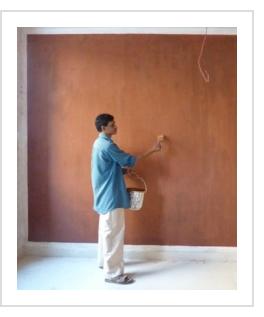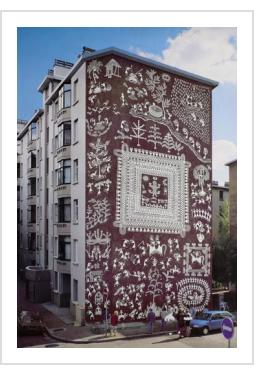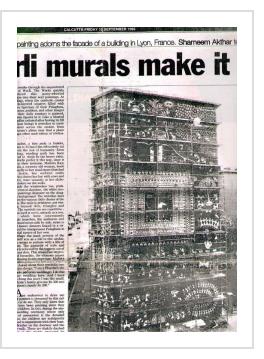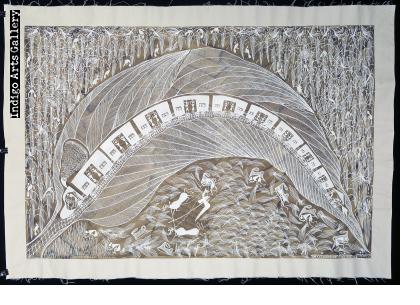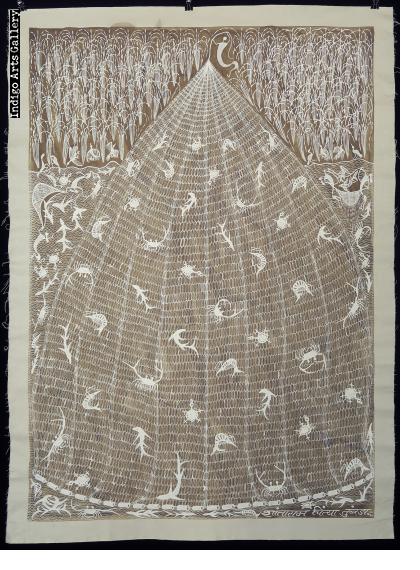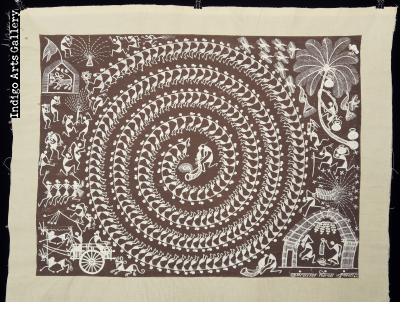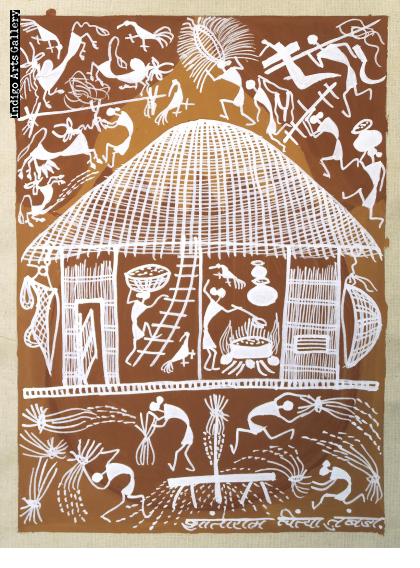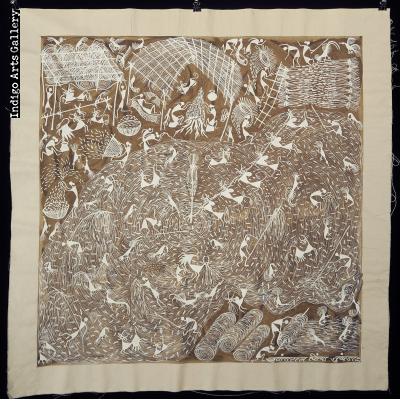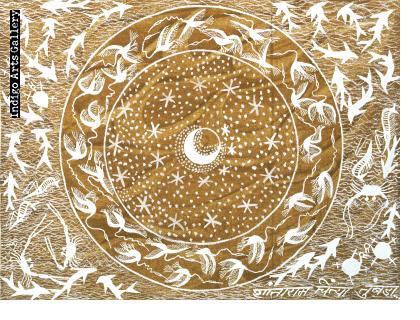About the Artist
Shantaram Chintya Tumbada was born in 1975 in Thane District, Maharashtra.
I first met Shantaram Chintya Tumbada in 1997 at the Alliance Française in Mumbai. He was presented to me by Vishwas Kulkarni, the nephew of Bhaskar Kulkarni, one of the first great specialists in Warli art as well as being a painter and anthropologist. Bhaskar also taught Vishwas the Warli dialect, which made him a particularly interesting guide. In Mumbai I came across a poster of an immense mural painted by a Warli artist who, until then, was unknown. On reading the caption, I learned to my amazement that the painting had been created in 1995 in my hometown, Lyon, in France! And I had had to travel to the other side of the world to discover it! The wall painting had been created as part of the Tony Garnier urban museum in which five painted walls represented five continents. The organizers had chosen a young, virtually unknown Indian artist from the Warli tribe called Shantaram Chintya Tumbada.
From 1996 to 1999, Shantaram and myself met on numerous occasions, as often in his tribe as at my home in Pondicherry where I held workshops and staged exhibitions. Shantaram’s style is characterized by great simplicity and graphical precision and his drawings are as elegant as they are effective. In 1995 Shantaram produced several series of drawings, adapting creation myths to the modern age.
This association of meticulousness and charm enthralled me. How was it possible to spontane- ously have achieved such graphical maturity, comparable to that seen in logos designed by the best graphic designers? I asked him to create several series of drawings in which a single figure fully filled the space. Fascinated by the refinement of his drawings before he had even filled in the white, I asked him if he would produce some simple sketches. These revealed the quality, assurance, awareness, fluency, and suppleness of his hand.
Using an extraordinarily basic and common iconography and a palette of just two colors, Shantaram and a few special artists from his community produce unparalleled art while continually renewing their interpretations of their ancestral art. They only need to be given an opportunity for their talent to flourish. However, unfortunately, they are still busy filling the demand from the handicrafts market aimed at tourists looking for exotic souvenirs and paintings produced quickly at low prices.
(above bio. courtesy of Hervé Perdriolle Galerie)

